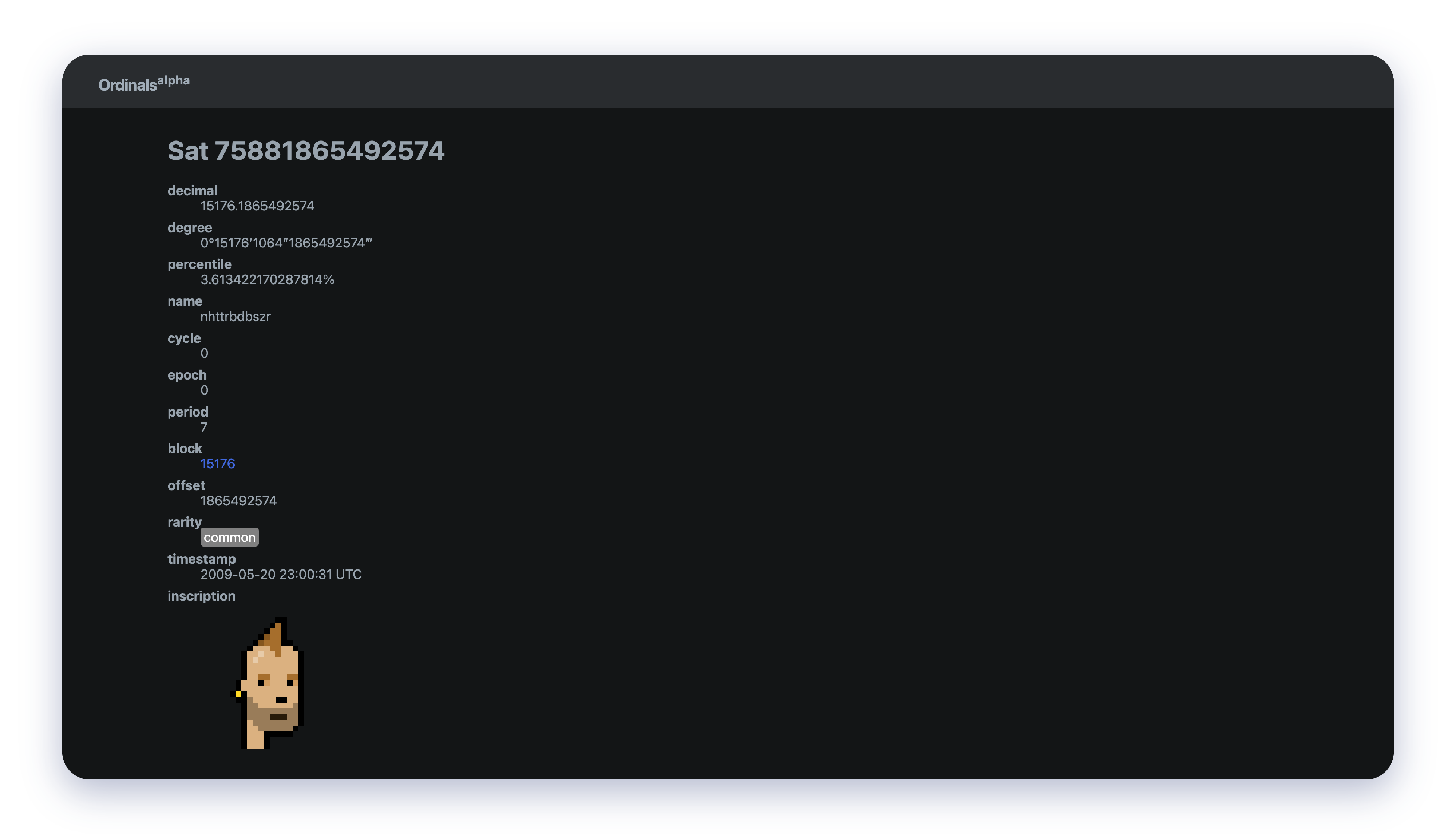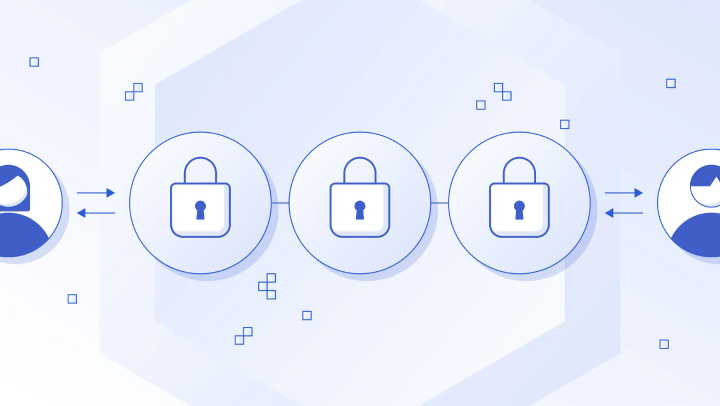What Are Ordinals? Bitcoin NFTs Explained
Ordinals are means of creating Bitcoin NFTs by attaching data such as images, videos, and more to an individual satoshi on the base Bitcoin blockchain.
Launched on Bitcoin mainnet by developer Casey Rodarmor on January 20, 2023, ordinal NFTs are simply the latest way to create NFTs on Bitcoin. While non-fungible tokens (NFTs) on Bitcoin aren’t a new concept, with layer-2 networks on top of Bitcoin such as Counterparty and Stacks already enabling Bitcoin-based NFTs, ordinal NFTs feature a fundamentally different architecture to other Bitcoin NFTs.
Since their launch, over 200K ordinal NFTs have been minted by a growing community of users, developers, and enthusiasts who are excited about the potential of native Bitcoin NFTs. But what exactly are ordinal NFTs, how do they work, and why are they different?

<div class="educational-divider sections-divider"></div>
What Are Ordinal Inscriptions?
Ordinals are means of creating Bitcoin NFTs by attaching data such as images, videos, and more to an individual satoshi on the base Bitcoin blockchain. Unlike their predecessors, ordinal NFTs don’t exist on a separate layer from Bitcoin. Rather, they use an arbitrary but logical ordering system called ordinal theory to give each individual Bitcoin satoshi a unique number. In this regard, ordinal NFTs are completely Bitcoin-native. They work without changes to the Bitcoin protocol, don’t require any extra layers, and are backward compatible with the network.
A “satoshi,” or “sat,” is equivalent to 1/100,000,000 of a single Bitcoin, the smallest possible denomination of Bitcoin.
The History of Ordinal NFTs
While ordinal NFTs were truly unlocked through the conceptualization of ordinal theory, ordinal NFTs as they exist today were made possible by the Segregated Witness (SegWit) and Taproot updates to the Bitcoin Protocol, which took place in 2017 and 2021, respectively.
It’s important to note that these updates were not made for the specific purpose of enabling these new types of NFTs. But since each update enlarged the amount of arbitrary data able to be stored on-chain within a block—meaning there was now space for images, videos, and even games—Ordinal NFTs were unintentionally made possible as a result of their deployment.
Segregated Witness (SegWit)
Segwit was a 2017 update that resulted in a soft fork of the Bitcoin blockchain. The update effectively segregated a Bitcoin transaction into two sections by adding a “witness data” section that could support arbitrary data.

Witness data was originally created as a way to:
- Bypass the stringent limitations of the blocksize limit
- Allow optional, arbitrary data transmission
- Prevent nonintentional transaction malleability
In a technical sense, the implementation of SegWit meant that transactions no longer needed to include witness data (often the sender’s digital signature). Instead, an additional space for witness data was created as a separate structure at the end of a block. It supported arbitrary data transmission and had a discounted “block weight” that cleverly kept larger amounts of data within Bitcoin’s blocksize limit to avoid the need for a hard fork.
This was the first precursor for ordinal NFTs because it expanded the limits of how much arbitrary data one could include in a transaction.
Taproot
Implemented in November 2021, Taproot was a multi-faceted upgrade meant to improve Bitcoin’s privacy, scalability, and security. In doing so, Taproot created an easier system for storing arbitrary witness data and relaxed the limitations on how much arbitrary data could be placed inside a Bitcoin transaction. The initial goal of this upgrade was to further enhance Bitcoin-based smart contracts like time-locked contracts, which are often outlined in witness data.
These changes were a key enabler for ordinal NFTs, which store NFT data in Taproot script-path spend scripts. The upgrade made it easier to structure and store arbitrary witness data, creating the foundation for the “ord” standard. And with the relaxed data requirements, a single transaction could hypothetically fill up an entire block with its transaction and witness data up to the blocksize limit of 4MB—greatly expanding the media types that could be put on-chain.
<div class="educational-divider sections-divider"></div>
How Do Bitcoin NFTs Work?
To understand how ordinal NFTs work, it’s important to make a distinction between the terms “ordinals” and “inscriptions,” both of which are used to refer to this new type of Bitcoin NFT.
- Ordinals are a system for ordering sats in a way that creates the “non-fungible” property necessary to create NFTs.
- Inscriptions are the contents of the ordinal NFT itself—the image, text, video, or any other arbitrary data that a user would consider synonymous with an NFT.
These NFTs can be best understood by drawing a parallel to non-Bitcoin NFTs, which are unique, 1-of-1 tokens that generally have two components: tokenID and metadata.
TokenID
Fungible tokens are interchangeable. For example, there’s no way to tell two different Ethereum coins apart, just like it’s impossible to distinguish one dollar from another. TokenIDs put the “non-fungible” in NFT—they provide each NFT with a unique barcode that enables users to differentiate tokens from one another.* A tokenID is what makes an NFT functionally unique.
*NFTs can have the same tokenID if they’re created by different smart contracts. In this case, the smart contract is how you differentiate one NFT from another.
Ordinal Theory as TokenID
Bitcoin is fungible, which means there’s no way to differentiate one bitcoin from another. That’s where ordinal theory comes in.
The key innovation of ordinal NFTs is that they provide a system for numbering each individual sat. The result: A unique ID for every single satoshi on the Bitcoin blockchain. Each ordinal, in its most basic form, is simply a satoshi that has been assigned a unique number. Here’s how it works.
In ordinal theory, individual satoshis are numbered in the order that they are mined. The first ordinal is the first satoshi ever minted, dating back all the way to 2008. When a satoshi is transferred, the order is preserved through a first-in, first-out system based on the order of transactions.

Ordinal theory does not violate the nature of Bitcoin fungibility. The Bitcoin protocol does not formally recognize this novel ordering of satoshis. Rather, a community of ordinal enthusiasts have simply decided to collectively ascribe significance to this numbering system and build tools that honor it.
Metadata
In non-Bitcoin blockchains, metadata is the optional attachment of arbitrary data to a non-fungible token. It’s used to represent and showcase the vast range of art, in-game assets, profile pictures, financial assets, and more that have become synonymous with the word “NFT.”
Inscriptions as Metadata
Ordinal NFTs don’t have a designated spot for metadata like their non-Bitcoin counterparts. Instead, the metadata for ordinal NFTs is held within the witness data of a transaction.

This is also where the term “inscription” comes from—the data attached to a specific satoshi is “inscribed” within that specific part of a Bitcoin transaction. To inscribe a specific satoshi with data, and create an ordinal NFT, users must send a transaction of an individual satoshi to a Taproot-compatible wallet and attach the desired metadata as part of the transaction. They must also be mindful of the transaction’s ordering to ensure the desired satoshi is not used as a network fee. Tools that automate this process help remove these risks and make the process much easier for non-technical users.
<div class="educational-divider sections-divider"></div>
How Are Bitcoin Ordinals Different from NFTs?
The key difference between Bitcoin ordinals and more standard NFT types is their fluid nature. Because the Bitcoin protocol does not formally recognize ordinal theory, an ordinal can either be fungible or non-fungible. It depends completely on who owns the ordinal and whether they wish to preserve the individual satoshi.
For example, if a Bitcoin user does not recognize or care about an ordinal or the data attached to it, it can simply be used like any other Bitcoin. Ordinals are fungible in this way—they can be used to pay for network fees or sent as payment, though the arbitrary data will still stay attached. The same is not true of an Ethereum NFT. An Ethereum NFT is completely different from an Ethereum coin, and it’s impossible to mix up a fungible token with an NFT because the Ethereum Network treats each token type differently.
<div class="educational-divider sections-divider"></div>
The Debate Around Ordinal NFTs
The rise of ordinal NFTs has sparked discussions within the Bitcoin community about the fundamental role and ethos of Bitcoin.
Some argue that Bitcoin should be used for secure financial transactions, that the meme-fueled rise of ordinal inscriptions is needlessly filling up Bitcoin’s blockspace and driving up transaction fees. Others are excited about the memetic/cultural value that ordinal NFTs can bring to the Bitcoin blockchain and the idea of Bitcoin expanding its immutable, decentralized database past financial transactions.
Because ordinals are fully valid in today’s Bitcoin software, removing the ability to create ordinal inscriptions would require an update to the Bitcoin protocol. Thus, it’s ultimately up to the Bitcoin community to collectively decide whether or not ordinals are here to stay.














